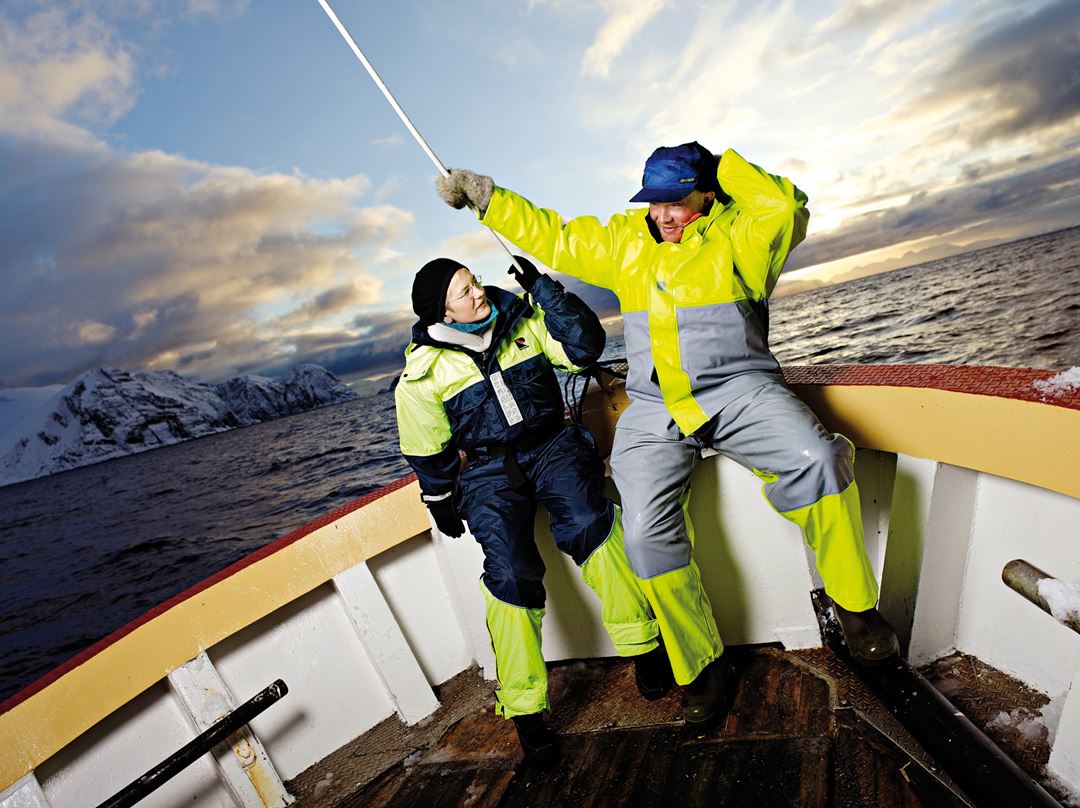The oilskins was developed in collaboration with SINTEF Fisheries and Aquaculture, Regatta, the Norwegian Fishermen's Association and Gjensidige.
Experience so far shows that the oilskins has saved at least ten fishermen from drowning, and is put to use in more and more countries. The last documented case is the Irish lobster fisherman Jamie Fitzgerald that went down while fishing last winter. He could tell that the floater made him stand straight up and down in the sea, with his head well above water, so he felt safe. He managed to swim to land in the icy water, while his friend, who had neither Regatta-clothes, or life jacket, drowned.
The process behind
Behind the design of the oilskins, there is a long design process that started with in-depth interviews of 23 experienced fishermen and other premise providers, including representatives from the Norwegian Fishermen's Association. These showed that fishermen mainly used rainwear when working on deck, as a protection against water and dirt. But the clothing was regarded as hot, dense and uncomfortable. At the same time, the respondents told that there were few fishermen who used a life jacket, despite the danger of falling overboard. The life jacket was regarded as an additional bulky garments that involved a risk of snagging.
306 fishermen answered a questionnaire in which they listed demands they had for their own professional wear. SINTEF drew out the ten requirements that received the most votes. "Built-in buoyancy" was one of them. With this list as a requirements specification, the researchers asked the technology industry on a tender.
Transporting perspiration
The choice fell on the Regatta, which themselves had created a prototype for a new workwear for fishermen. With their prototype as starting point, and the fishermen's "Top ten list" as a guide, the product developers at SINTEF started on the design of the new suit.
The ideas materialized in prototypes, which went to SINTEF's work physiological laboratory. There, the researchers got objective measurements on the suits properties. The tests showed that the new suit increased transportation of perspiration by 25 percent compared with a combination cotton clothing and regular oilskins. .
At the testing of the suit on six fishing boats before launch, fishermen reported that they liked the design. Others came to the same conclusion: in March 2007, the manufacturer Regatta and SINTEF was jointly awarded the "Award for Design Excellence" Excellence from the Norwegian Design Council, for the design of the pants.
The past year has shown that the design provides a full payout - and saves lives.

